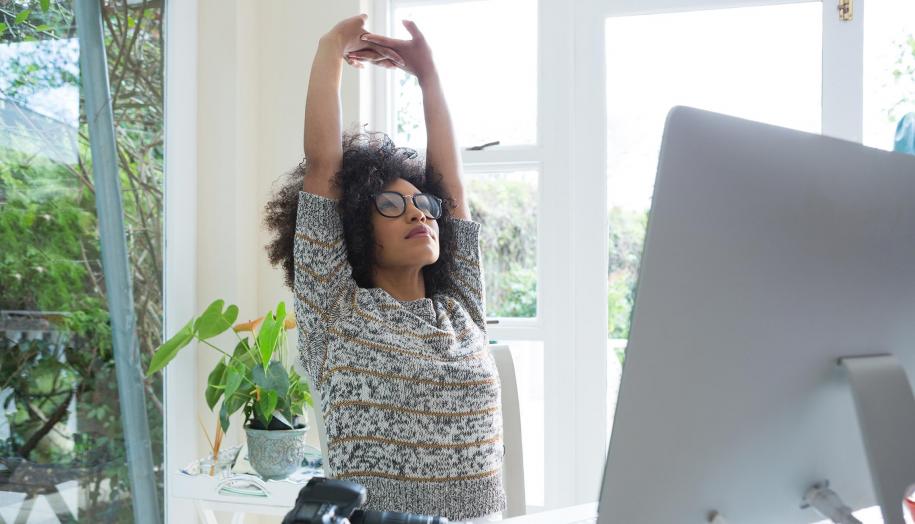
Breadcrumb
- Essential Partners
- Our Impact
- News and Notes
- The Power of Movement in a Virtual World
The Power of Movement in a Virtual World

We are what we practice. Right now, that means a lot of sitting at our computers, iPads, and phones, with our attention narrowly focused on our virtual meetings.
I don’t know about you, but, besides Zoom meeting fatigue, I’m also suffering the aches and pains in my body of (sometimes) hours of poor posture. Ever notice how much your shoulders are rolled forward by the end of a virtual call? Or how much tension you hold in your shoulders and neck?
To counterbalance this sedentary practice—understandable in a post-COVID-19 world—we need to incorporate opportunities for movement into our daily schedule and activities, what Olivia Cheever calls “gourmet movement.”
Movement brings aliveness to our body, spirit, and mood. It deepens our awareness of bodily sensations like pressure, temperature, or constriction. Research in the field of Somatics has shown that our physical state can shape our thoughts and emotions (not just the other way around).
For example, If you’re slumping in your chair right now, pause and notice your mood and thoughts. Are you withdrawn, distracted, or too narrowly focused on something? Do you feel spent, tired, numb, or maybe even defensive? Or perhaps it feels like you are carrying the weight of the world (your business, the health of your family) on your shoulders?
Now, let me walk you through a simple exercise.
Straighten your posture. Sit on the edge of your chair. Keep both feet on the ground
Imagine a string coming out of the top of your head. The string is being pulled straight up now. It straightens your spine. It aligns your head over your shoulders and your shoulders over your core, letting your body’s bone structure carry your weight rather than using your muscles to do so.
As you do that, take a slow, deep breath. Draw your breath into your lower stomach, not the upper chest, and feel it travel the length of your body.
Now start to notice if your mood or thoughts have changed at all. Do you relate to yourself or the outside world even slightly differently after a breath or two?
You can practice this exercise discreetly during a long meeting, or lead your whole team through it together. Here are some other things to try out:
- Awareness Through Movement techniques, from Feldenkrais. For example, very slowly curl your tailbone inwards and notice how the length of your spine moves and how your shoulders curve inwards. Likewise, slowly and gently push your tailbone out and notice how your spine moves and your chest moves forward. By slowly moving your tailbone, just notice how your whole torso shifts and changes.
- Paul Linden’s sitting practice
- Yoga poses, such as a sun salutation or neck and shoulder release.
- Power poses, via Amy Cuddy. For example, the “Wonder Woman” pose: place your feet shoulder-width apart and put your hands on your hips. Hold for 2 minutes and see if your confidence level changes!
You are what you practice, so be aware of what you’re practicing. We can incorporate all sorts of movement exercises, small and large, into our new virtual lives. Movement can stimulate your bodies and spirits, broaden your attention, sharpen your awareness, and improve your mood. Your Zoom-fatigued self will thank you!
